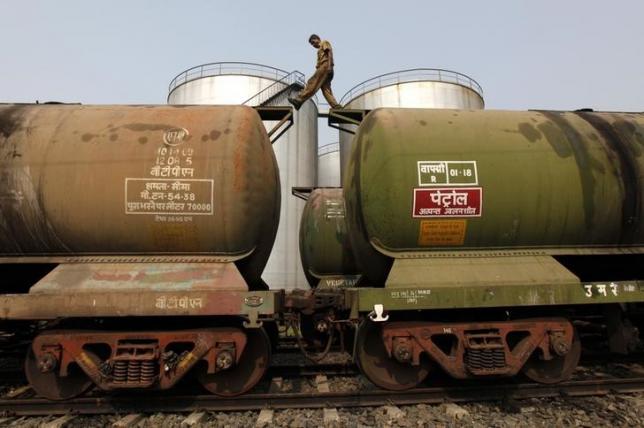
Macroeconomic data for the nine-month period ended December 2015 is a clear indicator that the slump in crude oil and commodity prices is not a win-win for India, according to a DBS Bank economist.
If falling crude oil prices have given the country enough elbow room to manage its finances better, it has also hit the Indian economy hard in terms of exports, wrote Radhika Rao, economist, group research, DBS Bank, in her note "India: fading boost from low oil prices" on Thursday.
"A fifth of India's exports go to OPEC countries. Shipments to the bloc fell 3.3% y-o-y in the April-November 2015 period, compared to growth of 5% the year before. In particular, exports are down 10% y-o-y to the UAE and 48% to Saudi Arabia," she said.
"The increasing proportion of commodities in India's exports has seen a third of export earnings in a free-fall in the past year. In December 2015, petroleum exports fell 47%, rice 36%, and iron ore 70%," she added.
This debunks the argument made by Union Finance Minister Arun Jaitley that India has largely benefited from the sharp fall in global crude prices. India's crude oil imports account for almost 80% of its total consumption.
"The low oil price regime and the low commodity price regime substantially suit us because we are net buyers of these," he had said early this month at the Partnership Summit jointly organised by the Andhra Pradesh government and the Confederation of Indian Industry (CII).
India's merchandise exports declined for the 14th month in a row in December 2015. The cumulative value of merchandise exports for the April-December 2015 period was $196.6 billion, a drop of 18% over $239.92 billion during the same period last fiscal.
Merchandise exports account for a fifth of India's GDP, besides providing jobs to millions of Indians.
Flagging off another concern, Rao said the distress caused in oil-producing Gulf countries due to falling crude prices would hit remittances from the region. These remittances are a crucial support to manage the country's current account balance.
The remittances were valued at $70 billion in 2014, according to a World Bank report, which said Saudi Arabia and the United Arab Emirates (UAE) were among the top five destinations from where the remittances were made to developing countries by migrants.
Rao said almost half of India's remittances are channelled through Gulf countries, suggesting remittances could decline from the region due to the fallout on their economies as a result of the slump in crude oil prices.
The pace of growth in NRI deposits fell sharply to 7.66% during the April to September 2015 period, from 26.23% in the corresponding period last fiscal, according to a Reserve Bank of India update released on 11 January, 2016.
NRI deposits stood at $10.82 billion during the April-November 2015 period, up from $8.17 billion in the corresponding period last fiscal.














